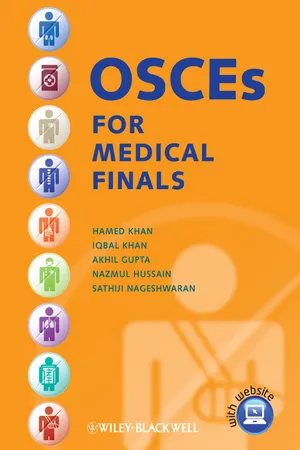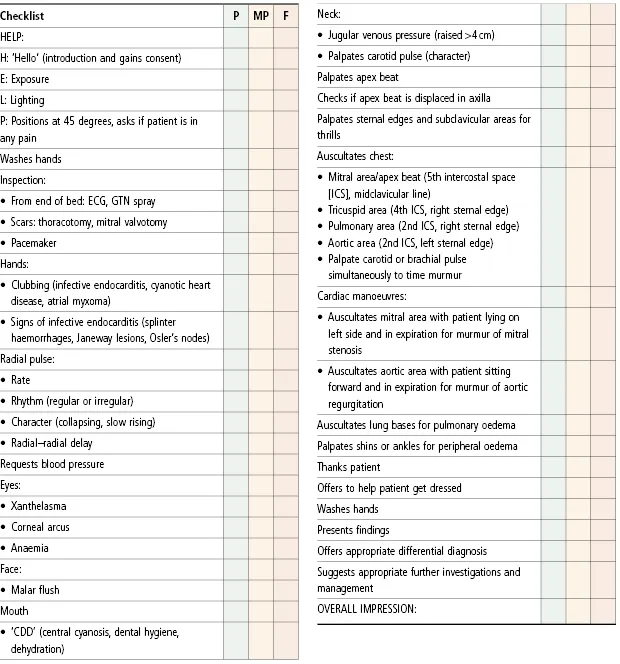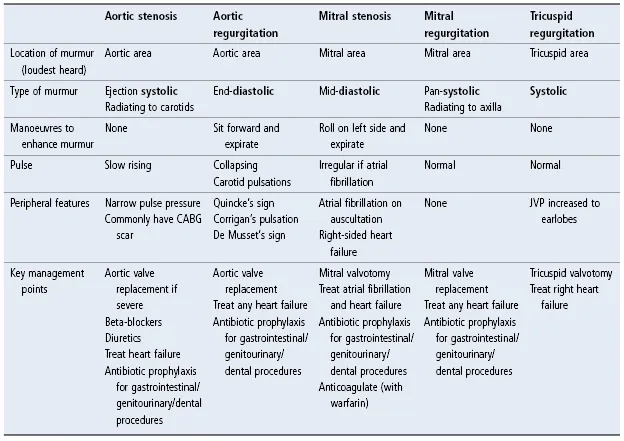
OSCEs for Medical Finals
Hamed Khan, Iqbal Khan, Akhil Gupta, Nazmul Hussain, Sathiji Nageshwaran
- English
- ePUB (adapté aux mobiles)
- Disponible sur iOS et Android
OSCEs for Medical Finals
Hamed Khan, Iqbal Khan, Akhil Gupta, Nazmul Hussain, Sathiji Nageshwaran
À propos de ce livre
OSCEs for Medical Finals has been written by doctors from a variety of specialties with extensive experience of medical education and of organising and examining OSCEs.
The book and website package consists of the most common OSCE scenarios encountered in medical finals, together with checklists, similar to OSCE mark schemes, that cover all of the key learning points students need to succeed. Each topic checklist contains comprehensive exam-focussed advice on how to maximise performance together with a range of 'insider's tips' on OSCE strategy and common OSCE pitfalls.
Designed to provide enough coverage for those students who want to gain as many marks as possible in their OSCEs, and not just a book which will ensure students 'scrape a pass', the book is fully supported by a companion website at www.wiley.com/go/khan/osces, containing:
- OSCE checklists from the book
- A survey of doctors and students of which OSCEs have a high chance of appearing in finals in each UK medical school
Foire aux questions
Informations
Top Tips
- Memorise the steps: The most important thing that OSCE examiners are looking for is an ability to carry out a full examination with reasonable technique and speed. At finals level, you will be forgiven for missing a few signs, and the vast majority of the marks on the mark schemes are allocated for going through the motions and doing all the ‘steps’. In contrast, at postgraduate level, for example for the MRCP exam, you would be expected to pick up all the major signs, and be penalised heavily for missing them.
- Always suggest a number of possible differential diagnoses: Very few doctors will be able conclusively to put their finger on a diagnosis after examining a patient for 10 minutes without a history. Offering a number of differentials means that you have a higher chance of at least mentioning the correct one, even if it is not at the top of your list. It will also show a healthy awareness of your own limitations.
- Practise, practise and practise: The best way to do this is by seeing patients, having a friend to assess you using our checklists and then getting critical (but constructive) feedback from them. Swapping roles and watching colleagues examine is more useful than most students think, as it will reinforce the steps of the examination, and you may see them use techniques and skills that you would not otherwise have thought of. Doing all the major examinations should become such a normal routine for you that you can do it without thinking about what the next step will be – just like riding a bicycle or driving a car.
- Don’t be nervous: Most people have problems in OSCEs not because of poor technique or knowledge, but because of anxiety and nervousness. Don’t be overwhelmed by the occasion, and don’t be intimated by an examiner’s grilling. You will find it much easier to focus on your technique and findings if you are relaxed, and most examiners only grill students who are doing well, as they do not waste their breath on those whom they have decided are a lost cause!
- Don’t worry about minutiae: Medicine is not an exact science, and different doctors have different ways of examining patients, most of which yield the right conclusions. At undergraduate level, all the examiners are looking for is a decent, fluent technique that appears to be well practised. Don’t spend ages trying to figure out exactly how much the chest should expand, or whether the cricoid–sternal notch distance is three finger breadths or four.
- Don’t hurt the patient: This is the only unforgivable sin in the OSCE. Its always a good idea to start your examination by asking if the patient is in pain anywhere, and reassuring them that if you unintentionally cause pain during the examination, you will be happy to stop. Students often have a tendency to ignore patients saying ‘Ouch!’ and pretending that they have not heard it, but this is definitely the worst thing you can do. If you do cause pain, acknowledge it immediately, apologise unreservedly and offer to stop – both examiners and patients will appreciate your honesty and professionalism.
Generic Points for All Examination Stations

Summary of Common Conditions Seen in OSCEs

Hints and Tips for the Exam
Identifying Valvular Lesions
Murmurs can frequently be heard throughout the chest, but the area where a murmur is loudest is u...